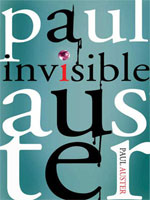
For good or bad, when I’ve gone as far as a chapter or its equivalent in a book, I commit to finishing that book. Perhaps life is too short and there are too many good books out there to possibly waste time with something that isn’t clicking with you as a reader. However, I can’t not stick with a book until the (sometimes bitter) end, on the chance that it is just slow to build and win my interest and confidence, and will reward me in the end. Such was the case with Man Gone Down, by Michael Thomas – and I’m very, very glad I stuck with it.
An unnamed African-American man sprints through a four-day period in New York City, scrambling to find jobs, settle debts and just plain score in order to amass enough money to win back his estranged wife and three children by finding a new home and paying his children’s school fees. During that sprint, he struggles with real and perceived demons from the past and present, including alcoholism, professional and creative disappointment, and racism. He also struggles with whether or not he’s actually sprinting after the right things, from his family to his aspirations to what he’s been led to believe are his top personal and financial priorities in this compressed and nerve wracking exercise. The authenticity of the proverbial American Dream is hinted at, and the striving of Jay Gatsby is referred to specifically and yearningly several times.
What initially verges on irritating about this book is perhaps also what is brilliant about it. You can’t get a purchase in this slippery narration, as the beleaguered narrator layers his four-day grocery list of desperate “to do’s” with complaints about why he’s in this situation to begin with, flashbacks to ostensibly pivotal moments in his life and so on. As a reader, it’s disorienting … but then it occurred to me that this effect was exactly the point. The narrator was unable to get his own purchase, kind of like he was tumbling faster and faster downward … ah yes!
Just as it is difficult to get your footing with the narration, it is difficult to get a clear handle on the nameless narrator for, in fact, much of the book. It becomes an increasingly tedious thing to listen to a protagonist bemoan his so-called life as a social experiment. Something or someone other than him is always responsible for his failings and shortcomings – he even blames his dissatisfaction with how he strums a guitar on genetics. As the reader, you rally with him when he reacts to a real insult – someone on a renovation job site singling him out with the n word – but then you shake your head when he also perceives insult from someone inadvertently putting milk in his coffee. As he reaches the end of this breathless sprint, though, he seems to acknowledge that everyone is a social experiment, and it’s all a social experiment. And on that encouraging point with his own character, I don’t think it’s a spoiler to say that the book ends on a significantly hopeful note.











